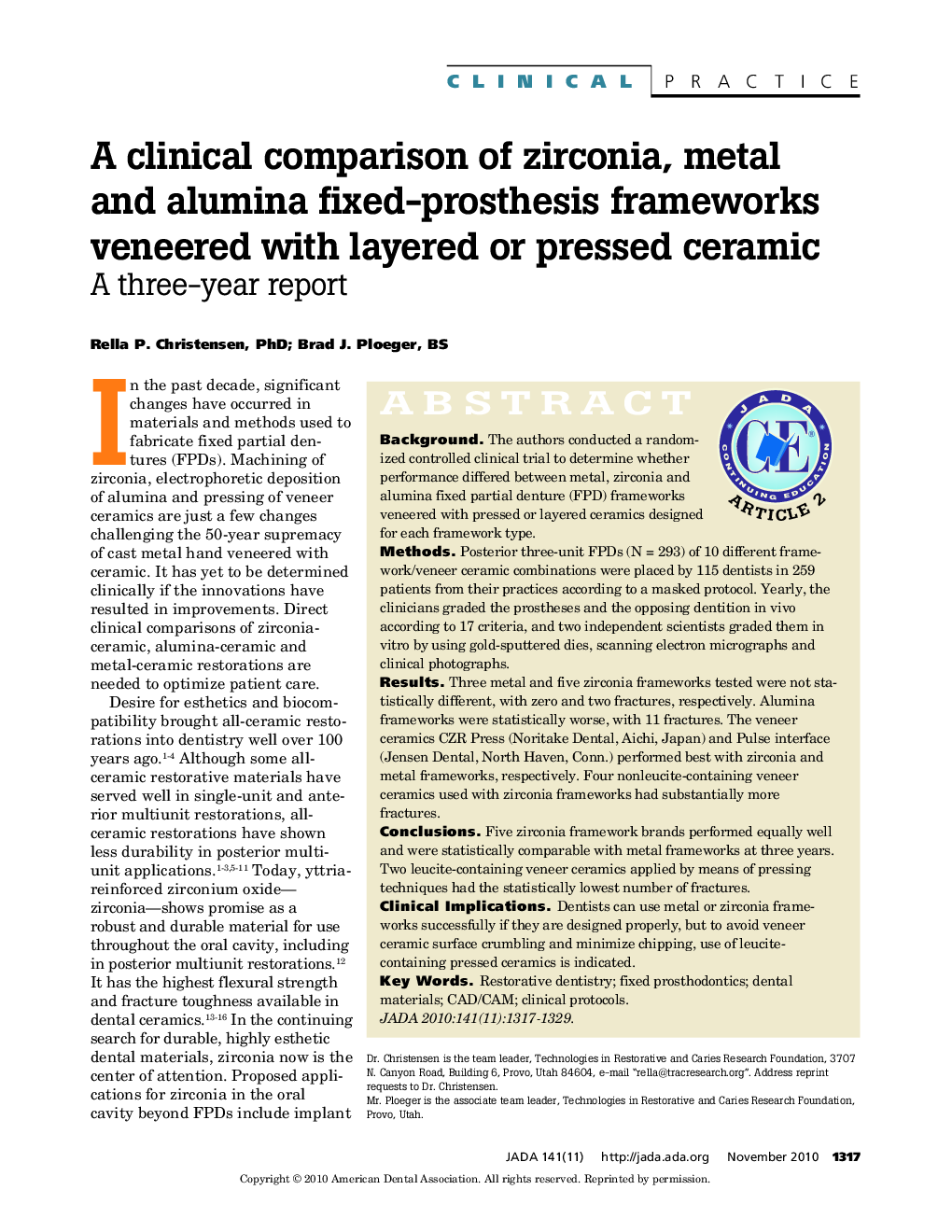| Article ID | Journal | Published Year | Pages | File Type |
|---|---|---|---|---|
| 3138466 | The Journal of the American Dental Association | 2010 | 13 Pages |
ABSTRACT BackgroundThe authors conducted a randomized controlled clinical trial to determine whether performance differed between metal, zirconia and alumina fixed partial denture (FPD) frameworks veneered with pressed or layered ceramics designed for each framework type.MethodsPosterior three-unit FPDs (N = 293) of 10 different framework/veneer ceramic combinations were placed by 115 dentists in 259 patients from their practices according to a masked protocol. Yearly, the clinicians graded the prostheses and the opposing dentition in vivo according to 17 criteria, and two independent scientists graded them in vitro by using gold-sputtered dies, scanning electron micrographs and clinical photographs.ResultsThree metal and five zirconia frameworks tested were not statistically different, with zero and two fractures, respectively. Alumina frameworks were statistically worse, with 11 fractures. The veneer ceramics CZR Press (Noritake Dental, Aichi, Japan) and Pulse interface (Jensen Dental, North Haven, Conn.) performed best with zirconia and metal frameworks, respectively. Four nonleucite-containing veneer ceramics used with zirconia frameworks had substantially more fractures.ConclusionsFive zirconia framework brands performed equally well and were statistically comparable with metal frameworks at three years. Two leucite-containing veneer ceramics applied by means of pressing techniques had the statistically lowest number of fractures.Clinical ImplicationsDentists can use metal or zirconia frameworks successfully if they are designed properly, but to avoid veneer ceramic surface crumbling and minimize chipping, use of leucite-containing pressed ceramics is indicated.
